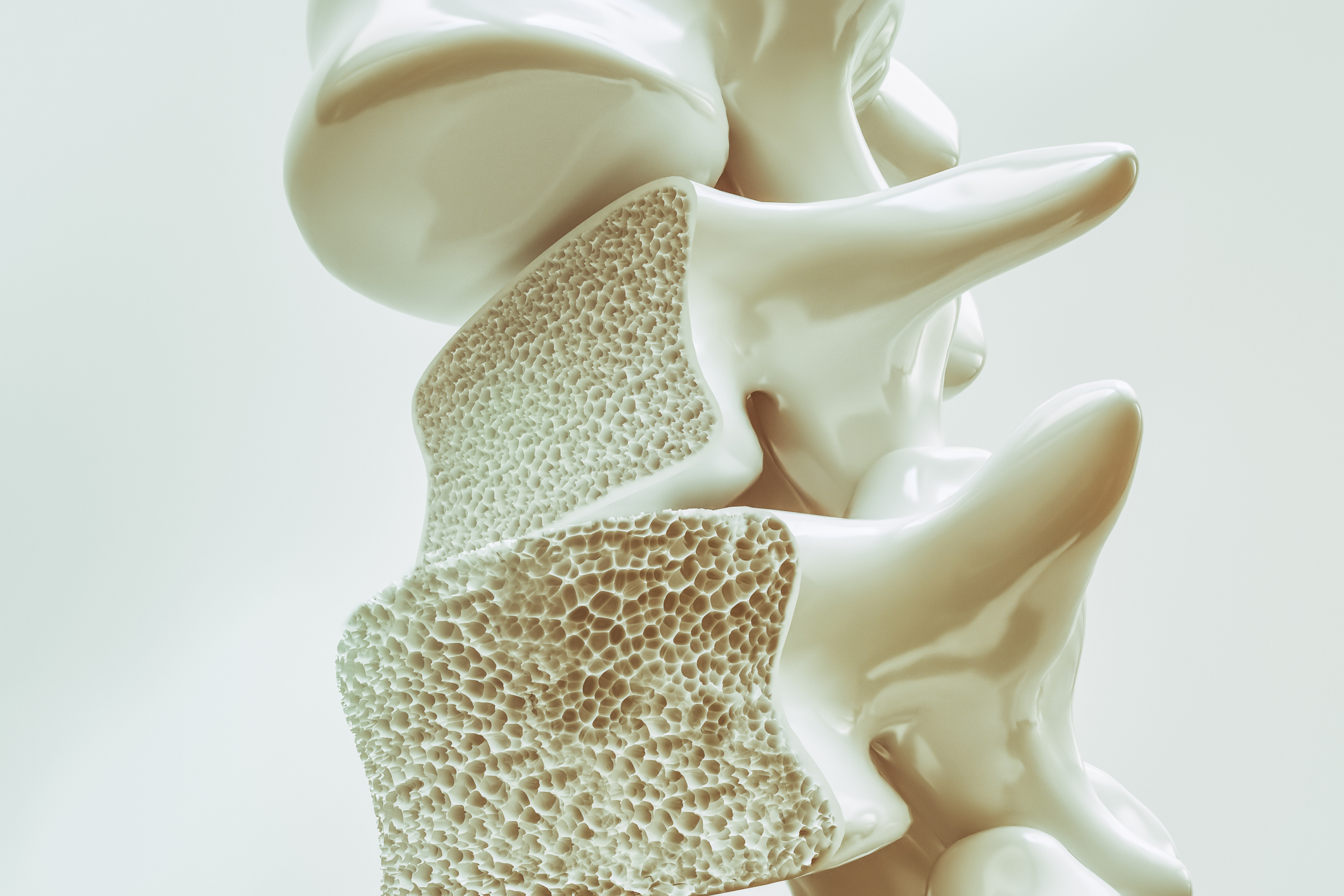
Osteoporosis is a medical condition characterized by the progressive loss of bone mass and deterioration of bone tissue, leading to weakened and fragile bones. It is a common condition, particularly among older adults, and it primarily affects women after menopause. However, men can also develop osteoporosis, albeit at a lower rate.
Bone tissue is constantly undergoing a process of remodeling, with old bone being broken down and new bone being formed. In osteoporosis, this balance is disrupted, resulting in a decrease in bone density and strength. As a result, individuals with osteoporosis are more susceptible to fractures, even from minor falls or injuries.
Several factors contribute to the development of osteoporosis, including:
-
Age and gender: The risk increases with age, and women are more prone to develop osteoporosis, especially after menopause due to hormonal changes.
-
Hormonal changes: Reduced levels of estrogen in women and testosterone in men contribute to bone loss.
-
Lifestyle factors: Lack of exercise, sedentary lifestyle, poor nutrition (especially low calcium and vitamin D intake), excessive alcohol consumption, and smoking can increase the risk of osteoporosis.
-
Medical conditions and medications: Certain medical conditions, such as hormonal disorders, gastrointestinal diseases, and certain medications (e.g., long-term corticosteroid use), can increase the risk of osteoporosis.
-
Family history: Osteoporosis tends to run in families, suggesting a genetic component.
The symptoms of osteoporosis are often silent until a fracture occurs. Fractures most commonly affect the spine, hips, wrists, and ribs. Back pain, loss of height over time, and a stooped posture (known as a dowager’s hump) may also be signs of vertebral fractures.
The diagnosis of osteoporosis is typically made through bone density testing, such as a dual-energy X-ray absorptiometry (DXA) scan. Treatment options aim to slow down bone loss, improve bone density, and reduce fracture risk. They may include lifestyle modifications (such as regular exercise and a balanced diet rich in calcium and vitamin D), medications to increase bone strength, and fall prevention strategies.
If you suspect you have osteoporosis or are concerned about your bone health, it is important to consult with a healthcare professional who can evaluate your condition and provide appropriate guidance and treatment options.
See More on Video
The Bone Density Solution By Shelly Manning As stated earlier, it is an eBook that discusses natural ways to help your osteoporosis. Once you develop this problem, you might find it difficult to lead a normal life due to the inflammation and pain in your body. The disease makes life difficult for many.